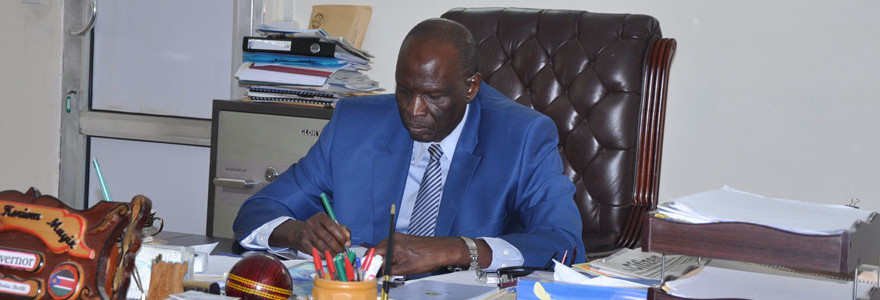This report is part of an exclusive series, ‘War Economy’, which focuses on the effects of civil war on the economic situation in South Sudan.
South Sudan’s central bank has loaned billions of pounds to the government to finance its wartime deficits since December 2013, creating new money that has driven down the value of the pound.
This monetary policy has benefited the government by allowing it to increase spending, while citizens have seen their savings and incomes drop in relative value owing to rising inflation.
Government debt to the Bank of South Sudan increased from 3.9 billion South Sudanese pounds (SSP) before the war in November 2013 to 8.1 billion by December 2014, according to bank statistics reviewed by Radio Tamazuj. These liabilities took the form of overdrafts and treasury bills and bonds.
Over the same period, government deposits at the bank dropped by 1 billion SSP, increasing the government’s net liability to the bank by more than 5 billion South Sudanese pounds.
The Central Bank has financed this partly by increasing the money supply.
Bank of South Sudan statistics show that the amount of currency in circulation before the war was nearly 2 billion SSP in November 2013. This grew to about 2.8 billion pounds by December 2014, a difference of 823 million or 42% increase.
Other ways of measuring the money supply put the increase in the billions.
Monetary base is another way of measuring money supply. It counts not only physical currency in circulation but also commercial bank deposits. According to central bank statistics, the pre-war monetary base was 4.8 billion South Sudanese pounds in November 2013. This grew to 7.5 billion by end-December 2014, an increase of 2.7 billion SSP or 56%.
The increase was particularly rapid during the last three months of the year 2014 when the total monetary base increased by 1.4 billion SSP, significantly outpacing IMF projections.
Statistical trends after that date are not publicly documented. Radio Tamazuj is not in possession of bank statistics for the period January to March 2015.
Economists have a third way of measuring the total money supply. This is called “broad money.” According to International Monetary fund statistics from December 2014, broad money increased over the 2013/2014 fiscal year by 21% and again by 20% (projected) for the 2014/2015 fiscal year.
‘Dramatic impact on poverty’
Economists at the World Bank and International Monetary Fund have warned that the printing of new money could lead to the hyperinflation and dramatically worsen poverty in South Sudan.
According to a confidential World Bank document obtained by Radio Tamazuj, economists believe that the current policy of the South Sudanese central bank could further weaken the currency and lead to increases in the prices of basic commodities.
The briefing document from January 2015 warns that “monetary financing by the Central Bank… would trigger severe macro-economic instability.”
It describes a scenario of “arrears accumulation, through the delayed payment of suppliers and of public wages, and heightened recourse to Central Bank financing.”
“Both these actions would ripple through the economy, creating instability in the private sector, stoking depreciation of the currency and inflation. Another risk is the provision of financing at extremely unfavorable and non-transparent terms, which would compromise the integrity of South Sudan national assets, and can potentially bring with it a host of governance issues.”
The World Bank document adds, “As the fiscal situation is worsening, a monetary expansion may exacerbate inflationary pressures and further depreciate the parallel market exchange rate. Experience from the oil shutdown showed that high inflation combined with reduced income could have dramatic impacts on poverty.”
Similarly, the International Monetary Fund stated in a December briefing, “As the fiscal situation is worsening again in 2014, shortfalls in revenues and in external financing are leading to a monetary expansion that threatens to bring inflation to double digit levels in 2015.”
Military spending
Since the civil war started in December 2013 the government has significantly increased its spending on military operations, supplies and salaries.
A report by Frontier Economics, a European economic consultancy, says that military spending amounted to 8% of nominal GDP during the 2013/2014 fiscal year while budgeted military spending for 2014/2015 amounted to 11% of GDP.
“These are high shares when compared to averages reported for other conflict countries: around 5.2% in countries during civil wars, 4.7% post-conflict, and 3.3% in times of peace,” the report says.
Read more from the series ‘War Economy’:
South Sudan’s budget is twice last year’s oil earnings (30 March)
Irrecoverable losses at S Sudan oil fields (30 March)
Kiir’s office spends more than budget of an entire state (28 March)
Secrecy around South Sudan’s dwindling central bank reserves (28 March)
South Sudan’s Lakes police paid 2 months late (27 March)
Bread price rises in South Sudan state capital (27 March)
South Sudan fiscal report delayed after Q1 overspend (27 March)
South Sudan denies printing more money (27 March)




